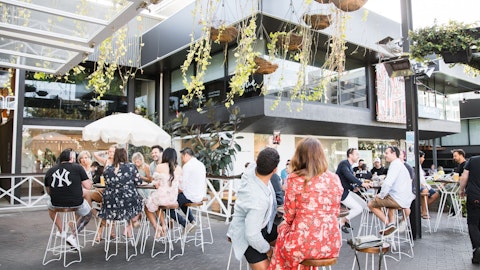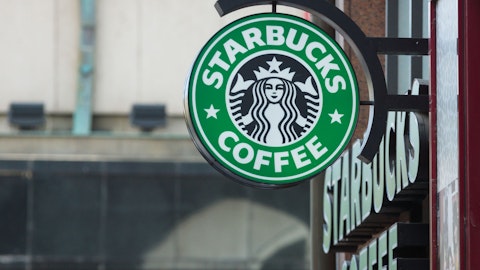Dennis Geiger: Curious as it relates to pricing, if you could speak a bit more to kind of what you’ve seen to date as it relates to the customer response to the pricing, obviously, with the strong sales trends, I’m assuming not a whole lot, but any thoughts with respect to resistance or customer feedback to pricing and how that impacts how you think about pricing going forward?
Rajesh Vennam: Dennis, I think the reaction is not that dissimilar to historical meaning we are getting a pretty decent flow-through from pricing north of 90%. And so really not seeing any major pushback. We haven’t seen any moderation on the check mix. There have been things here and there where maybe advertiser pricing, we may not have gotten the exact level of flow-through. But overall, when you look big picture, it doesn’t look like there’s a lot of resistance. Now we are pricing a lot less than our competitors. So I don’t know what is happening with the industry itself, but our pricing is well below the industry. And maybe that’s part of what — why we’re not seeing a lot of existence.
Dennis Geiger: Great. I appreciate that, Raj. And just one more. Just wondering if you could speak a bit more to the staffing situation and the execution in restaurant. I think very encouraging that you spoke to being fully staffed, manager staffing levels at all-time highs, feedback scores from the customers sounds strong. But as it relates to the level of execution currently versus the potential, is there anything with respect to maybe the 10-year of your average employee right now, may be shorter than pre-COVID that can build going forward? Anything there as it relates to where operations are now versus maybe where you would — where they can go or where you’d like them to go.
Ricardo Cardenas: Dennis, we have a lower tenure today than we did before COVID because of the turnover over the time through COVID. Our turnover is still elevated from the pre-Covid levels, but it’s getting better and it’s getting — we’re working on getting it closer to what our pre-COVID turnover levels were. As we’ve mentioned in prior calls, our focus is on training these new team members and getting them more efficient and getting them more productive. And as we continue to get our turnover levels down, that will continue to be a focus for us. also training our existing team members to make them better and give them more opportunities to learn and grow. So we will continue to train. But your point on a slightly lower tenure that is true. And we think as our tenure gets back to more historical levels, which is going to take a little while. But as it does get back to historical levels, then we will improve our productivity slightly from there, too.
Operator: Our next question comes from Chris Carril of RBC Capital Markets.
Chris Carril: So clearly, a lot of focus on Olive Garden this morning, but I was hoping you could provide some more thoughts on LongHorn and just the continued momentum you’re seeing there. Maybe just any thoughts on how the brand is performing relative to the category? And then just anything else you’re seeing that’s driving the continued strong sales there.
Ricardo Cardenas: Yes, Chris. Todd and his team, as we’ve said in the past, have been on a journey investing in quality and portion and that continues to pay off. They had over 7% same-restaurant sales this quarter. coming off a very strong result last year, right? So it was a pretty strong performance for Longhorn. Raj mentioned average weekly sales are longer and 25% above the pre-COVID levels. Now the state categories benefit over time, but Longhorn is holding their own in that stay category. They’re doing really well. I would say traffic, unlike most of casual dining traffic in the long run down room is up versus pre-Covid. And it’s, I think, one of the only full-service restaurant companies out there that have positive traffic in the dining room of anybody of scale.
So we’re really proud of what they’ve done. Remember, they were on the journey of simplification before COVID. So they’re ahead of everybody else in our portfolio on where they were. And so they didn’t have to worry about kind of flushing out that promotion guest that already happened. So really proud of what they’re doing. I will also say the state category in general is doing well because they’ve got a great value. The state category in general has a great value. If you think about what we put on the plate for the dollars you spend, the consumers know that. And so we’re going to continue to provide a great value at Longhorn and at all of our brands, but particularly a long run with the quality focus they’ve had, the simplicity that they’ve always had and the culture that Todd’s building.
Chris Carril: Great. And then maybe just following up on the earlier comments around the consumer. Can you provide any more detail in terms of like what you’re seeing regarding mix contribution to the comp any kind of trade up or trade down, any shifts in behavior there, if any?





